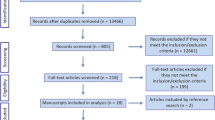Abstract.
In walking humans, arm to leg coordination is a well established phenomenon. The origin of this coordination, however, remains a matter for debate. It could derive from the intrinsic organisation of the human CNS, but it could also consist of a movement induced epiphenomenon. In order to establish which of these alternatives applies, we recorded arm and leg movements as well as their muscle activities during walking, creeping on all fours and swimming. The relationship between arm and leg cycle frequency observed under these various conditions was then investigated. We found that during walking, creeping on all fours or swimming, arm and leg movements remain frequency locked with a fixed relationship of 1/1, 2/1, 3/1, 4/1 or 5/1. When movements of the legs are slowed by flippers, the frequency relationship may skip to a different value, but the coordination is preserved. Furthermore, minimising the mechanical interactions between the limbs does not abolish coordination. These findings demonstrate that the arm to leg coordination observed in the walking human is also present during other human locomotor activities. The characteristics of this coordination correspond to those of a system of two coupled oscillators like that underlying quadruped locomotion.
Similar content being viewed by others
Author information
Authors and Affiliations
Additional information
Electronic Publication
Rights and permissions
About this article
Cite this article
Wannier, T., Bastiaanse, C., Colombo, G. et al. Arm to leg coordination in humans during walking, creeping and swimming activities. Exp Brain Res 141, 375–379 (2001). https://doi.org/10.1007/s002210100875
Received:
Accepted:
Issue Date:
DOI: https://doi.org/10.1007/s002210100875




